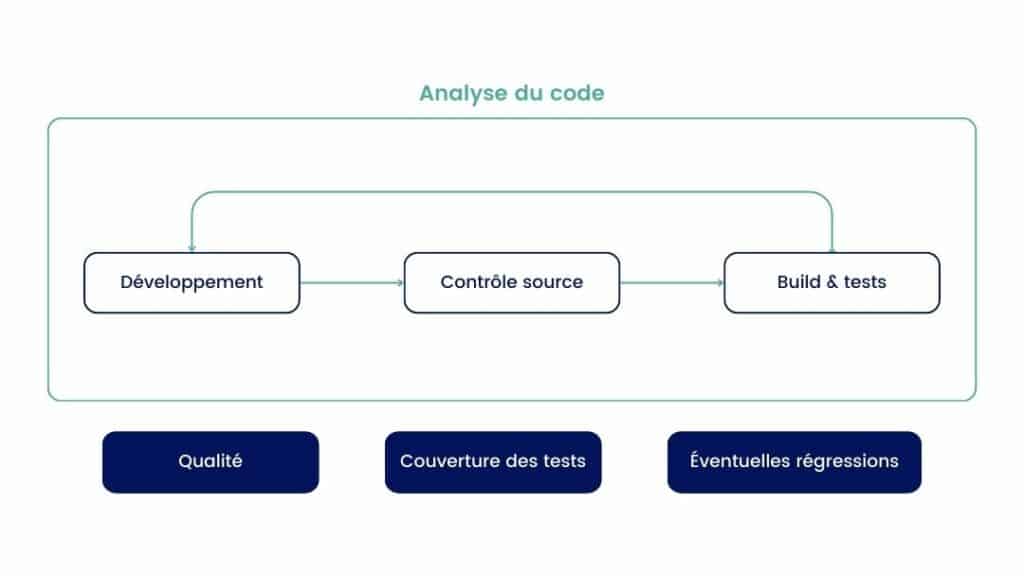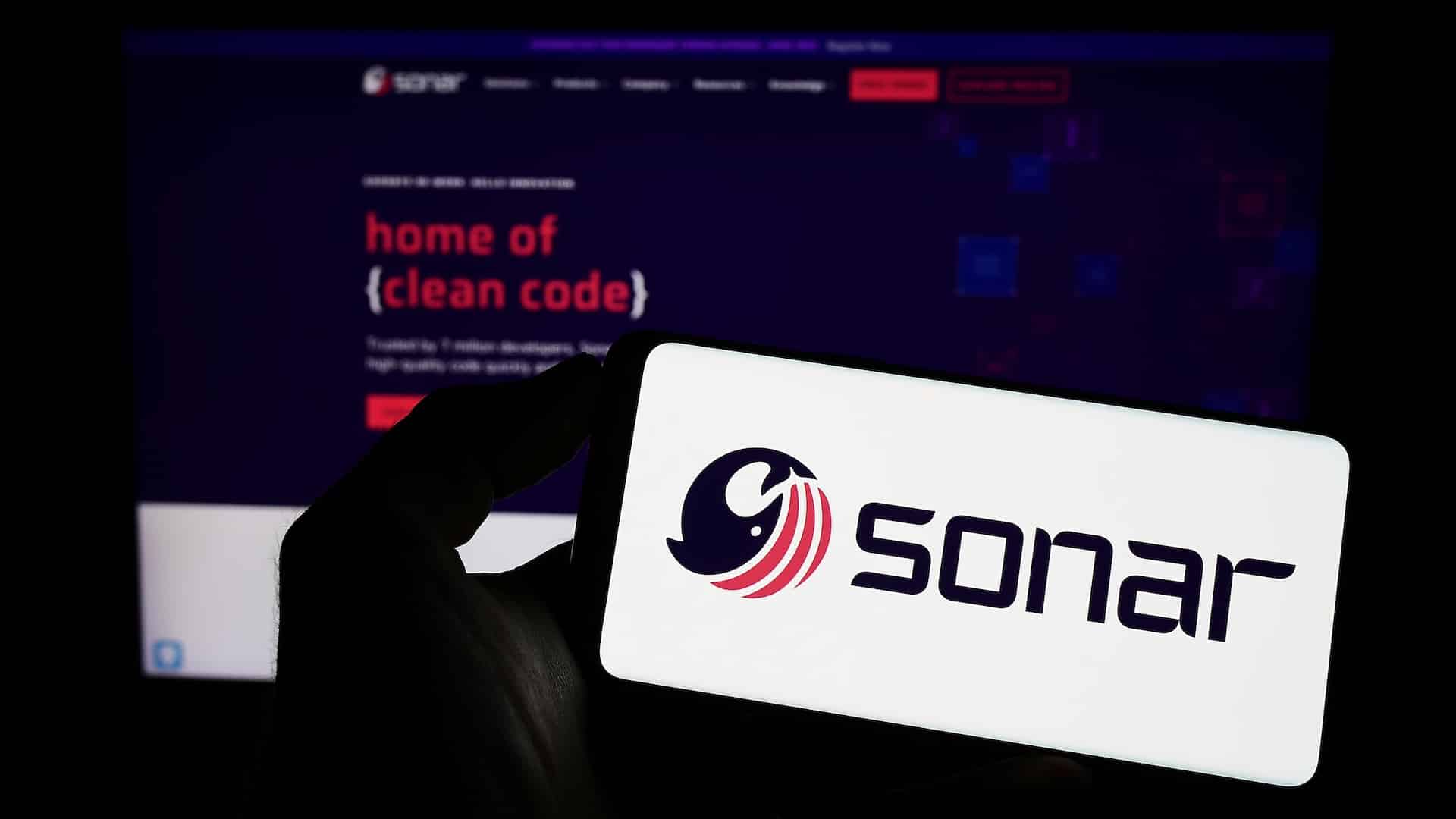Find out all about CI/CD in our detailed guide to 2023! Master continuous delivery for faster, more efficient deployments.
Are you developing an application and want to deepen your DevOps methodology by automating your processes? You’ve heard of CI/CD but need a guide? This article is for you.
Definition of CI/CD
Historically, the production release rate for an application is around one major update every 3 to 6 months… which is a very long time.
In a
Devops
If you’re looking to reduce your time-to-market, you’re probably wondering what would be an effective way of speeding up the process. This is where CI/CD comes into play, a method that seeks to automate and accelerate software development.
The term CI/CD is made up of two acronyms, for two important stages: CI stands for Continuous Integrationor Continuous Integration in French; and CD for Continuous Delivery and Continuous Deploymentor Continuous Delivery and Continuous Deployment in French.
Developing an application is often a long and tedious process, divided into many successive stages. The CI/CD approach makes it possible to accelerate distribution frequencyby automating the various development stages and and monitoring all stages of the application cycle.
Ebook gratuit
What is continuous integration?
CI (or Continuous Integration) therefore represents automation development processes. It’s how developers go about test and implement smaller iterations at more regular intervalsrather than implementing significant changes on a more ad hoc basis.
Are you a developer working on your functionality and need to request a code review to deploy a new version? The CI will enable you to control part of the delivery process by ensuring that your unit tests are run. In this context, the CI plays a crucial role in merger or pull requests (MR/PR). It ensures not only that your unit tests are executed, but also that the code is kept clean and bug-free, guaranteeing a smooth transition to production release.
These various recordings of small subsets will then be published on a SCM TOOL, or Source Code Management Tool. This centralizes all modifications as they are made, and manages all evolutions. Here, for example, we find the very popular GIT.
The pipeline (the set of steps involved in software development as part of a CI/CD strategy) builds the software from the source code present in the source code manager, known as “build” (compilation of executable code).
A series of automated tests is then performed to check the quality of the code, its behavior and the interactions between each coded subset. If an error is detected, this is when the developers are notified and can intervene.
The new build is then archived in the repository, ready for deployment!

By analyzing code via CI, developers can systematically check code quality, test coverage, possible regressions, and so on.
This notion is very interesting and important: CI helps maintain and even improve code quality. If your tests aren’t conclusive, it’s because one of your features isn’t behaving as expected. On the other hand, code analysis and especially code coverage will let you know whether your code is unit-tested. So we find ourselves in an ecosystem that makes development more reliable by detecting problems as early as possible: this is what we call “shift left”.
What is continuous delivery?
The next step is Continuous Delivery (CD). It can be considered as a phase of preparation before the software is deployed.
Its aim is to ensure that the code is always ready for publication. To achieve this, we need to set up automated quality and functional tests as part of the continuous integration workflow.
This stage encompasses various tests such as interface, load, integration and API reliability. This approach allows developers to scrutinize updates, identifying potential issues to be resolved before deployment.
Our teams at Qim info are here to help you speed up the development process and make it more reliable, so that you can quickly deliver value to users. We offer tools for continuous testing to ensure that program meets its requirements.
The more experienced among you will even be introduced to an additional step, the other CD: Continuous Deployment. Continuous Deployment. This is the next step, where even the application deployment process is automated.
But deploying without human intervention is no mean feat: it requires great confidence in the process, the ability to deploy without interruption, and a responsive monitoring system coupled with effective repair solutions, such as automated rollbacks.
So what's the difference between "CI" and "CD"?
CI (Continuous Integration) and CD (Continuous Delivery) are two successive stages in the same operating method: first CIwhich automates the compilation, testing and archiving of the deliverable; then CDwhich aims to manage the deployment and production launch of the application.
These two approaches are complementary, and together they enable us to automate and accelerate all application development processes from a DevOps perspective.
What is a CI/CD pipeline?
The pipeline is the set of steps used to develop software as part of a CI/CD strategy. The aim is to automate processes and make them faster and more reliable.
While the specific stages vary from company to company, the structure of a pipeline often remains the same:
- Development each developer works simultaneously on a different feature or iteration of the source code.
- Build: all new code validated in the repository (GIT) is collected, validated and compiled.
- Test The compilation goes through a series of automated tests to ensure that it works properly. Most often, they are unit testing, where the code is broken down into small, individually-tested units.
- Analysis Code analysis: in-depth code analysis to obtain metrics on code quality, code smelling, CVE dependencies and technical debt calculation.
- Delivery: the application is distributed to the repository which stores the builds, or pieces of code (dependencies) you created during the CI (Continuous Integration) phase, build artifacts created by continuous integration.
- Deployment : once the code has been verified by unit tests and user acceptance tests (UATs) and everything is ready for distribution, the project is sent to a deployment environment. These are usually additional simulations and checks, and each manually approved change is sent to production.

An efficient pipeline must be fast, reliable and precise It must optimize developer workflows.
What are the advantages of CI/CD?
As we said earlier, developing an application is often a long and tedious process. The CI/CD allows you to and speed up the process. in this process.
Continuous integration and delivery lets you release updates more frequently, without compromising quality. However, it is essential to understand that CI/CD is not a magic solution: its performance is based on the relevance and rigour of the automated tests implemented. A good automated test is designed to detect and deal with every error before compilation and deployment. But if these tests are not well designed or do not cover all functionalities, bugs may remain in the code. It is therefore crucial to ensure the quality of the tests to guarantee the effectiveness of this method.
Repetitive tasks are therefore taken care of automatically allowing your developers to concentrate on development tasks.
Which tools make up the CI/CD?
CI/CD tools play an important role in ensuring that each stage of the pipeline runs smoothly. Here is a list of the most commonly used tools:
- Jenkins a free, open-source java server for continuous integration.
- Gitlab CI/CD a suite of tools that allows you to set up CI/CD pipelines for any new or pre-existing Git-based project.
- Github Action:sometimes seen as a strong competitor to Gitlab CI, Action is a Github-developed tool that works only in the Github environment.
- Bamboo Bamboo: integration, deployment and continuous delivery software that brings together and automates builds, tests and releases in a single workflow.
- Azure Pipeline : orecent utility developed by Microsoft for Azure DevOps repositories. It has the advantage of being integrated into the Azure ecosystem.
- Circle CI a highly customizable CI solution. Its strong point: it supports a wide range of programming languages (Java, Python, JS, Haskell, Ruby on Rails and Scala).
- ArgoCD an open source continuous deployment tool based on GitOps, enabling automatic synchronization of Kubernetes applications with Git repositories.
These tools are the most widely used on the market. However, other tools sometimes offer innovative approaches and easier integration of an existing project, such as Nevervode, AppVeyor, Buddy and others.
Our teams will listen to your needs and guide you towards the tools best suited to your organization!
CI/CD pipelines guarantee application quality and security
Quality and safety are two essential elements in software development. In this context, CI/CD pipelines play a key role, as they provide a mechanism for verifying and guaranteeing both these aspects.
Application quality
Application quality refers to software reliability, performance and maintenance. :
- Reliability Reliability: ensures that the software works as expected, without errors or critical bugs.
- Performance Guarantees that the application meets response time requirements, manages memory and resources efficiently, and evolves as needs change.
- Maintenance Maintenance: facilitates future developments, whether to add functionality, fix bugs or update in response to new requirements or technologies.
The CI/CD pipelines contribute to quality by automating testing at every stage of development and ensure that changes made do not generate new problems.
One of the benchmark tools for ensuring code quality is SonarQube. It provides continuous code analysis to detect bugs, code smells and security vulnerabilities.
Regardless of the programming language used, SonarQube offers language-specific rules to guarantee the best possible quality. It integrates easily with CI/CD pipelines, enabling real-time analysis of every pull request or continuous integration. What’s more, with a detailed dashboard, teams can track the evolution of code quality over time and know where to focus their efforts.
Application security
Security is crucial to protect data and resources from external threats. It is based on :
- Access management Access management: authorizations and roles must be clearly defined so that only authorized people can make changes or deploy code.
- Protecting sensitive information Sensitive information, such as API keys or passwords, must be stored securely and never exposed or stored in the clear.
- Regular checks New updates or tools can potentially introduce vulnerabilities. Regular safety audits and checks are essential to anticipate and prevent such problems.
CI/CD pipelines therefore play an indispensable role in integrating security monitoring and analysis tools, which ensure that code is free of vulnerabilities and meets security standards.
In terms of tools, while SonarQube focuses on overall code quality, Snyk focuses on safety, particularly with regard to addictions. Snyk monitors your application’s dependencies for known vulnerabilities and alerts developers as soon as a threat is detected. Beyond simple detection, Snyk offers automated corrections in the form of pull requests, speeding up the resolution process. Whether you use GitHub, Bitbucket or GitLab, Snyk integrates seamlessly with your tool to monitor every branch and pull request.
What are the differences between CI/CD and DevOps?
The professionals we support regularly ask about the difference between Devops and CI/CD.
DevOps is an approach and even a culture culture which brings together two professions – developers and the operational team – to make software development more efficient. As for CI/CD, it’s a process a specific automation process with its own steps and tools, integrated into the DevOps approach.
In other words, CI/CD is a process that is part of a DevOps cultureculture, but is only a small part of it, as it encompasses many other aspects of how a company operates in software development.
I've got a pipeline, so it's all good?
A CI/CD vision is a very interesting approach to automating most of the processes a developer would have to manage. It also acts as a safeguard, stopping an “underground” deployment if it doesn’t meet the required quality or if a test fails.
However, a pipeline is just a tool! Always pay attention to the project, your needs and your requirements. If your tests don’t work, your pipeline won’t help!
Ebook gratuit
Our guide to integrating a CI/CD pipeline
Integrating a CI/CD pipeline is an essential part of modernizing development practices. If implemented correctly, it can transform the way teams develop and deploy software, promoting efficiency, speed and quality.
Principles
Integrating a CI/CD pipeline requires adherence to certain principles:
- Automation: the very essence of CI/CD lies in the automation of tests, builds and deployments.
- Collaboration: teams need to work closely together, share code frequently and solve problems quickly.
- Fast feedback: the idea is to get feedback on the code as quickly as possible, so that errors can be identified and corrected quickly.
Choice of tools
When it comes to CI/CD, the choice of tools often depends on a company’s specific needs and the technological environment in which it operates. Solutions such as GitLab CI are particularly useful. Jenkins, although no longer in widespread use, has also left its mark on the history of CI/CD. The key is to choose a solution that fits in with the company’s overall strategy and optimizes the development and deployment process.
Make sure the tools you choose are compatible with the technologies and platforms you already use. The tools should be able to evolve with your needs, especially if your team or code base grows.
Among the giants, Amazon, Google and Microsoft each offer their own solution:
AWS Code Pipeline
,
Azure Pipelines
and
Google Cloud Build
. Nevertheless, Google’s solution is far less common than the other two.
Infrastructure
Do you want to deploy on a public cloud, a private cloud, a local server or a combination of these options? Your choice will influence the configuration of your pipeline. To ensure constant availability, it may be necessary to have backup servers or clusters to manage loads. Ensure that resources (such as memory or computing power) are properly allocated to avoid bottlenecks.
Tests
Good test coverage is crucial to ensure that all code is verified and works as intended. Tests must be automated to ensure that they are carried out for every integration or deployment. Test results must be quickly communicated to developers so that they can correct any problems.
In conclusion, in this guide we’ve covered everything you need to know to get started with CI/CD process creation. You now have all the tools you need to create your own pipeline, and automate and accelerate your development processes.
So what are you waiting for? Qim info’s Cloud & Devops Solutions department is here to help you create your own CI/CD pipeline!

Clément Raussin
Head of the Cloud & DevOps Solutions Department at Qim info







